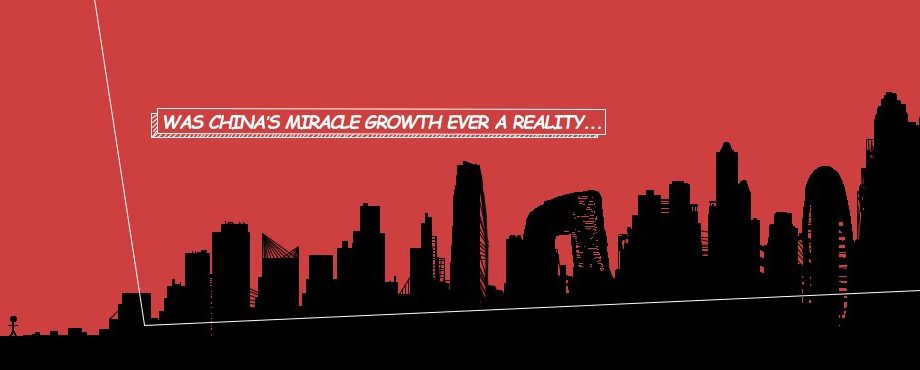Ximalaya FM: The Legal Monopoly
In the earlier days of the Internet, tech companies relied on free content to attract users. As the volume of digital content surged, however, quality did not necessarily keep up. It was a struggle to weed through low-quality content, and the time-poor, money-rich in China were willing to pay someone else to do the curating. This was when Ximalaya invited users to become hosts themselves and began to leverage their reputation to charge a fee for their content. With high accessibility, a growing awareness of intellectual property among Chinese netizens, and the convenience of mobile payments Ximalaya got the Chinese to pay for digital content. Ximalaya now has over 5 million hosts who curate and advertise their content, driving sales for the company as a result.Continue Reading
Profiting off of Prison Labor
“Factories with Fences” and “American Made” boasts UNICOR. Better known as the Federal Prison Industries program, UNICOR makes nearly half a billion dollars in net sales annually using prison labor, paying inmates between 23¢ to $1.15 per hour. Despite already earning one-sixth of the federal minimum wage, inmates with final obligations must contribute half of their earnings to cover those expenses. UNICOR, in addition to other government-owned corporations and private prisons, makes millions upon millions of dollars using nearly free prison labor.Continue Reading
Coronavirus and the Homework Gap
UC Berkeley’s policy decisions this past spring around remote learning in response to the coronavirus pandemic elicited a wide range of reactions from my peers. One of my classmates, Dick, was ecstatic as he opted for the Passed/Not Passed grading option for all of his classes—saving his GPA from completely tanking. Many of my graduating friends, on the other hand, were despondent as their last semester at Berkeley was cut short, leaving them prematurely saying goodbye to all their friends and the place they had called home for four years. Continue Reading
The Virtual Exchange Rate Trap
When I was in middle school, I hit a phase where I became addicted to money-earning apps, like FreeMyApps. Over the period of a few months, I had earned around $300. With that money, I probably could have bought something useful–but no, being my middle school self, I decided to spend all my hard earned money on Clash of Clans and bought 42,000 gems (the in-game currency of Clash of Clans). It seemed like a value buy at the time–42 thousand gems sounds like quite a lot. But, within one day, I had used up all my gems.Continue Reading
Small Box is the New Big Box
So what is a Flex Format store? They’re smaller Target stores carrying just a fraction of the products of full-line locations, with selections individually tailored to fit the specific needs of the surrounding community. Most include a CVS-branded pharmacy, an order pickup area, customer service, and a Starbucks-branded cafe. Clocking in at just 12,000 square feet, the Berkeley Shattuck location in particular is just 8% of the size of your average 145,000-square-foot Target store. The Shattuck location is one of the smallest in the chain, with typical Flex Format locations ranging from 25,000 to 40,000 square feet. Target seems to be heavily leaning into the Flex Format idea, as nearly all of its store openings planned for the next few years fall within the concept parameters. Continue Reading
Boeing (BA): A Buy at Low Levels?
It’s no secret that COVID-19 has transformed the American economy. Manufacturing plants are shutting down, employees who can are working from home, and companies are struggling to stay afloat. Although many of these changes are temporary in such scale, they may be permanent in a smaller scale—i.e., some number of employees who were previously commuting to work will likely permanently switch to working from home after being introduced to this possibility.Continue Reading
Unemployment and Inflation Numbers Might Invalidate this Econ Theory
About a year ago, I wrote this article about why the Fed was raising rates in trying to engineer a soft landing. The objective was to prevent an overheated economy and high inflation rates, given the record unemployment levels among other things. The theory goes that tight labor markets lead to wage growth. Wage growth leads to high inflation. Raising rates might prevent that. This was the sentiment at the Fed over a year ago.Continue Reading
Understanding Chinese GDP Misreporting
Despite recent metrics around the globe showing severe production declines as a result of coronavirus, Chinese GDP growth continues to be one of the fastest among developed and developing nations. That’s not a new story. While the rest of the world experienced recessions and layoffs, China blew through the 2008-2012 years, reaching an all-time productivity growth peak of 11 percent in 2011. By all official accounts, China is on track to surpass aggregate U.S. output and take the mantle of economic hegemony within the next several decades.Continue Reading
Bon Appétit’s In-House Reality TV Stars: How Free Should Digital Media Be?
Something that’s been comforting me during this pandemic has been a very specific YouTube Channel: Bon Appétit. The food and lifestyle magazine, owned by Condé Nast, was first published in 1956. In 2008, Bon Appétit started its YouTube channel, creating highly polished cooking videos in the “hands and pans” style popularized by Buzzfeed’s Tasty. The videos’ look and feel were very aligned with the sophisticated Condé Nast legacy brand.Continue Reading
Consequences of the Bike and Scooter Rental Industry
On the Instagram page “Bird Graveyards” one can find pictures and videos of shareable electric scooters being set on fire, thrown into the ocean, and being destroyed in any way imaginable. While it’s easy to laugh at these posts and go on about our lives, the short lifespan of these scooters begs the question: are they worth it? Continue Reading




